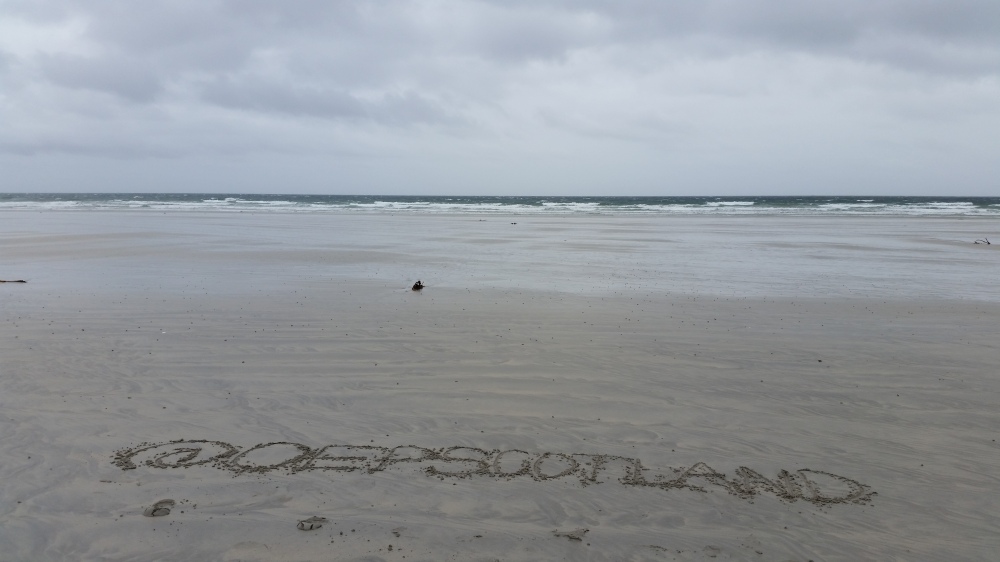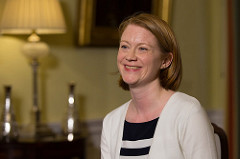
Image by Ronald Macintyre CC0
I wrote these notes to provide background to the presentation that I would have made at the RIDE 2018 conference in London were it not for the UCU pensions strike. In the post I reflect on recent developments in Open Educational Practice (OEP) and explore their implications for Open and Distance Learning (ODL) and the potential for mainstreaming in education more widely. In doing so I draw on personal experience garnered in the course of a three-year project concerned with OEP and on a review of recent literature.
In brief
ODL and the Open Education Movement constitute separate strands within the broader landscape of ‘open’ with distinct histories and origins. Both strands rely heavily on learning technology. However, the pedagogy and practice of ODL developed prior to the growth of digital technology. Open Education in contrast has more recent roots and has grown and developed at the same time and in harness with the rapid growth of digital and mobile technologies. There are multiple points of contact between the two strands but both face challenges in developing student centred practice for a world of ubiquitous digital devices and free digital content.
Massive Open Online Courses have stimulated interest in open education but arguably they have narrowed the frame of debate over educational practice; ‘open’, ‘online’ and ‘distance’ are often conflated in ways that are less than helpful. At the same time there is a tendency to privilege technology rather than focusing on student centred pedagogy.
Recent developments suggest that the affordances of open licensing open up opportunities for innovative practice based on social and contextual use of online courses.
At more length (with references)
Open and Distance Learning has roots in the nineteenth century but is most often associated with the development and growth of Open Universities from the 1970’s onwards. The new institutions were shaped by local conditions and adopted a range of pedagogical approaches (see Peters, 2001) but also shared common features – in particular the use of a range of technologies (post, radio and television) to reduce transactional distance. Their formation and growth predates the rapid growth in digital technologies that characterises the first two decades of the 21st century.
On the contrary the roots of Open Education are intimately linked to the digital revolution, with connections to the open source software movement. Core to Open Education is the idea of open licensing for educational materials. Such materials, snippets of resources, images, lecture notes, books or courses are known as OER – Open Educational Resources. The beginning of the Open Education movement is usually dated from 2002. This was the year that the Massachusetts Institute of Technology’s (MIT) launched its Open Courseware programme making large amounts of the university’s educational material available online as OER; free to use, share and reversion.
ODL and OER instantiate different meanings of ‘open’ but both are associated with ‘opening up’ access to education. Over the last fifty years, the scale and reach of Open Universities has enabled large numbers, who would otherwise have been excluded, to access education (Mugridge, 1997). However, in a recent of international developments Tait (2018) notes that many of these institutions are facing real challenges in developing their mission in the 21st century. There is also a real challenge for the Open Education movement. Advocates of OER have argued that digital technology combined with the affordances of openly licensed educational material will widen participation by breaking down barriers to access (see for example D’Antoni: 2009; Conole: 2012). There have been successes, notably the impact of Open Textbooks in the Unites States. However, the ‘promise’ of OER remains potential rather than actual
Widening participation is a critical issue for higher education systems internationally. In the UK access to higher education is highly skewed by socio-economic status. This is the case across the radically different fee regimes that currently characterise the UK system. Despite nearly two decades of policy initiatives inequality by socio-economic background is still entrenched. In the global south there is a huge gap between the demand for higher education and the number of places available for students.
The advent of Massive Open Online Courses (MOOCs) has had a significant impact on ODL, Open Education and the engagement of higher education institutions with online and distance learning. In some respects this has been positive – the numbers of academic staff involved across HE sectors has grown. Less welcome has been a focus on technological solutions and arguably the application of rather limited and traditional pedagogies. The MOOC model has tended to dominate discussions of options for online education. MOOCs are not generally openly licensed but they do enable mass participation. However, despite large numbers of participants there is little evidence that they are widening participation. Rather they seem to be broadening choice for those who already have or have had access to higher education.
I was fortunate to have the opportunity to work on the OEPS project from 2014 to 2017. OEPS was a cross-sector Scottish project on Open Education with a specific focus on widening participation that drew on a number of initiatives undertaken by the Open University in Scotland during the period 2010 – 2014. More details of the project can be found in the final report and in a number of papers published by project team members (Cannell: 2016; Cannell and Macintyre: 2017; Cannell, Page and Macintyre: 2016; Cannell, Macintyre and Hewitt: 2015). The project occupied a place at the intersection of ODL, Open Education and Widening Participation. It faced challenges because there is relatively little overlap or dialogue between the ODL, Open Education and Widening Participation academic or practitioner communities of practice. The remainder of this blog draws on the experience of the project team and on related examples from the wider literature. to highlight some of the ways in which it is possible to bring ideas and practice from ODL, Open Education and Widening Participation to bear on tackling issues of unequal access to higher education.
The Cape Town Declaration (2017) drew attention to the importance of developing appropriate pedagogies for using (OER) and highlighted the crucial role of Open Educational Practice (OEP). In the decade that followed notions of OEP developed from a focus on technical design to a concern with use practices. The OPAL report (2011) defined OEP as
Practices that support the (re)use and production of OER through institutional policies, promote innovative pedagogical models, and respect and empower learners as co-producers on their lifelong learning path.
In the same year Ehlers (2011) extended the definition to include social interaction among users of OER suggesting that OEP comprises
… collaborative practice in which resources are shared
by making them openly available, and pedagogical practices are employed which rely on social interaction, knowledge creation, peer-learning, and shared learning practices.
The OEPS project built on these themes. Its working definition of OEP highlighted a focus on widening participation:
We think of Open Educational Practices as those educational practices that are concerned with and promote equity and openness. Our understanding of ‘open’ builds on the freedoms associated with “the 5 Rs” of OER, promoting a broader sense of open, emphasising social justice, and developing practices that open up opportunities for those distanced from education.
Over three years the project worked in partnership with a wide range of organisations. In essence it operated as a large set of interacting action research projects; working with partners to understand questions relating to OEP, working collaboratively to design new student centred approaches, testing and evaluating. Over the course of the project this resulted in the design and co-production of fifteen new open courses.
Many of the findings resonated with work done elsewhere (for example Lane: 2013, Perryman and los Arcos: 2016; Arinto: 2018).
- Barriers to engagement and success in learning online combine the institutional, dispositional and situational factors that are well known in WP practice with specific features of the online environment.
- The affordances of OER open opportunities for reusing and remixing tried and tested content. This opens up the possibility for new and effective models of curriculum development that incorporate a process of participatory design.
- Open Education has often had a technology focus – there is a strong case for reorienting on practice, pedagogy and new models of student support.
- Good design recognises student context – the medium may be online but students may be online and in face to face groups.
- In any case designing in opportunities for peer support has significant impact on retention and success.
- The affordances of open can allow the mass scale of ODL (or MOOCs) to be combined with student centred and context specific customisation.
Overall the project findings suggest that as online content becomes ubiquitous there is a strong case for developing new models of curriculum development that privilege student centred pedagogy, social interaction and context specific support. This may require rethinking the boundaries between universities and other organisations that support (potential) learners (Cannell: 2016; Tait and Mills: 2003; Beetham and Sharpe: 2013). Working across boundaries to coproduce learning materials has benefits for academic and non-academic partners and for students.
References
Arinto, P. (2018) OER and OEP towards equitable and quality education for all.
Beetham, H and Sharpe, R eds (2013) Rethinking Pedagogy for a Digital Age, Routledge, New York and London
Cape Town Open Education Declaration. (2007) Cape Town Open Education Declaration: Un- locking the promise of open educational resources.
Cannell, P. (2016) Lifelong learning and partnerships: rethinking the boundaries of the university in the digital age, Widening Participation and Lifelong Learning, Volume 18, Number 1, pp. 61-73(13)
Cannell, P., and Macintyre, R. (2017) Free open online resources in workplace and community settings–a case study on overcoming barriers, Widening Participation and Lifelong Learning, Volume 19, Number 1, pp. 111-122(12)
Cannell, P., Macintyre, R., and Hewitt, L. (2015) Widening access and OER: developing new practice, Widening Participation and Lifelong Learning, Volume 17, Number 1, pp. 64-72(9)
Cannell, P., Page, A. and Macintyre, R., (2016) Opening Educational Practices in Scotland (OEPS). Journal of Interactive Media in Education. 2016(1), p.12.
Conole, G. (2012) Fostering social inclusion through open educational resources (OER). Distance Education, 33 (2) 131–134
D’Antoni, S. (2009) Editorial: Open Educational Resources: reviewing initiatives and issues. Open Learning, 24(1) 3–10
Ehlers, U-D. (2011) Extending the territory: From open educational resources to open educational practices. Journal of Open, Flexible and Distance Learning,15(2), 1-10.
Lane, A. (2013) ‘How OER Support Lifelong Learning’. In McGreal, R, Kinuthia, W and Marshall, S (eds) (2013) Open Educational Resources: Innovation, Research and Practice, Vancouver: Commonwealth of Learning and Athabasca University.
Mugridge, I ed (1997) Founding the Open Universities: Essays in memory of G. Ram Reddy, Sterling Publishers, New Delhi
OPAL (2011). Beyond OER Shifting Focus to Open Educational Practices. OPAL Report 2011.
Perryman, L.A. and de los Arcos, B., 2016. Women’s empowerment through openness: OER, OEP and the Sustainable Development Goals. Open Praxis, 8(2), pp.163-180
Peters, O (2001) Learning and Teaching in distance education, Kogan Page, London






 There is a danger that measures are chosen that encourage initiatives that aim to meet the metric but which don’t fundamentally challenge inequality. The recent debate in higher education about how to measure socio-economic deprivation has not been resolved. Single measures are attractive to politicians but unlikely to adequately capture the complexity of deprivation across urban and rural settings.
There is a danger that measures are chosen that encourage initiatives that aim to meet the metric but which don’t fundamentally challenge inequality. The recent debate in higher education about how to measure socio-economic deprivation has not been resolved. Single measures are attractive to politicians but unlikely to adequately capture the complexity of deprivation across urban and rural settings.